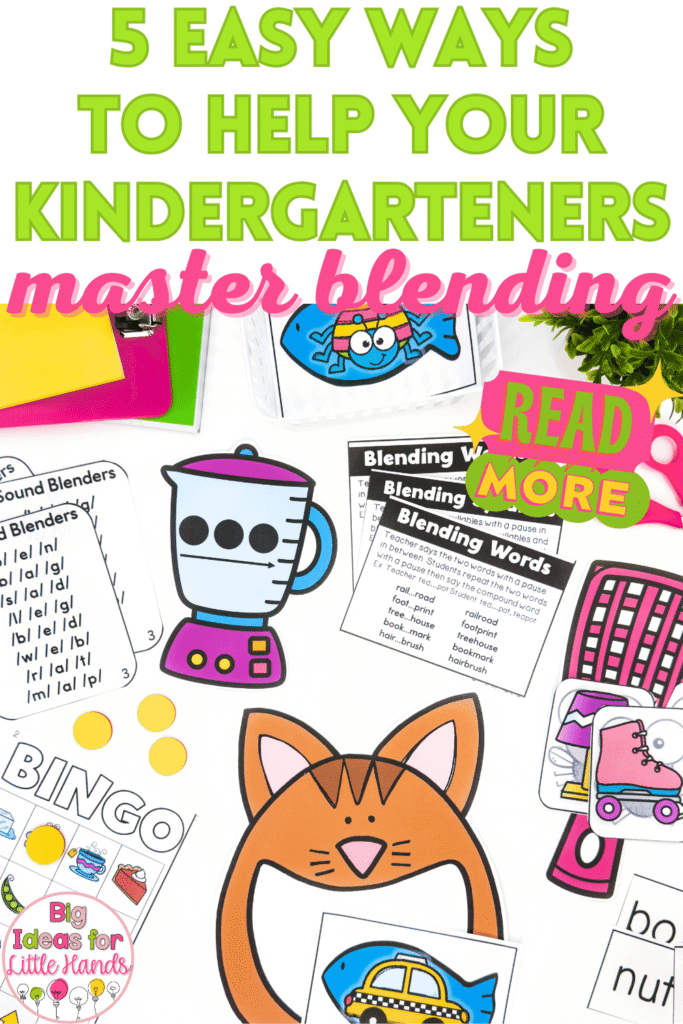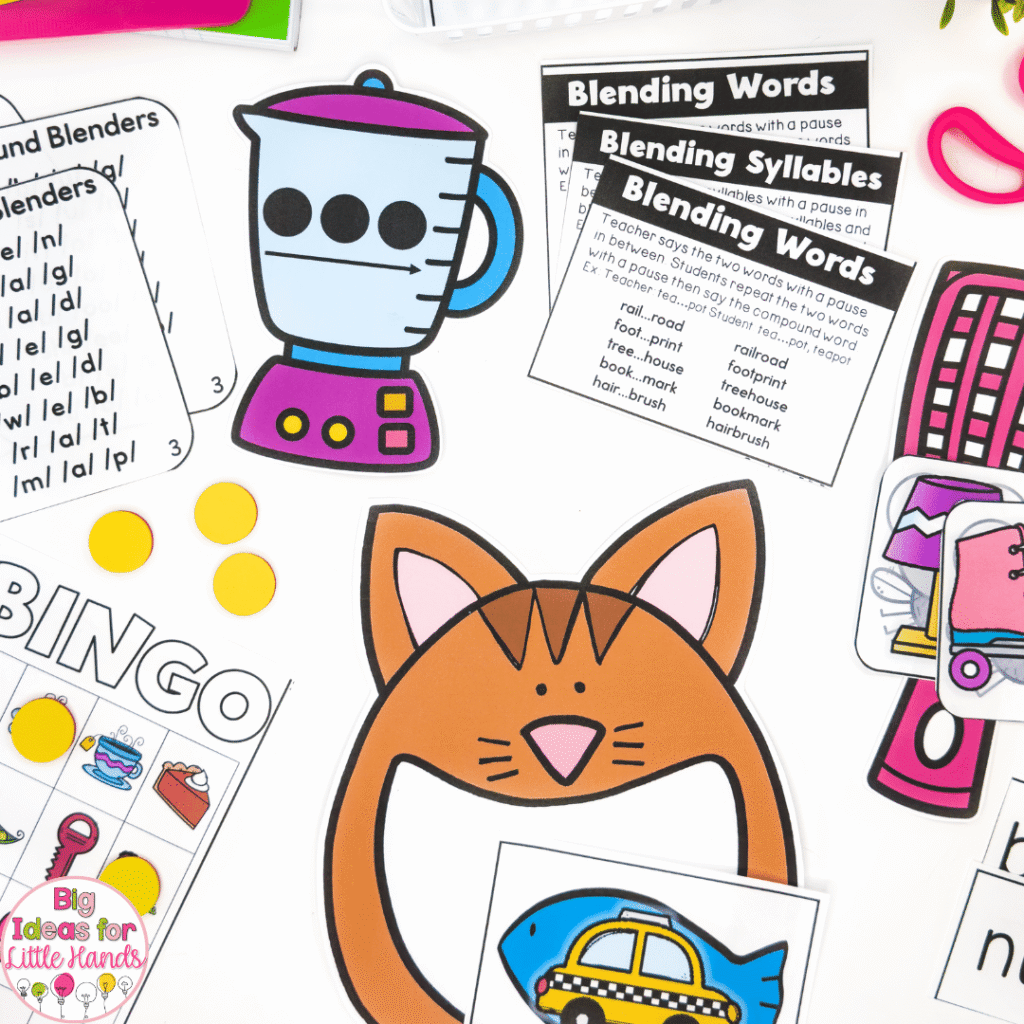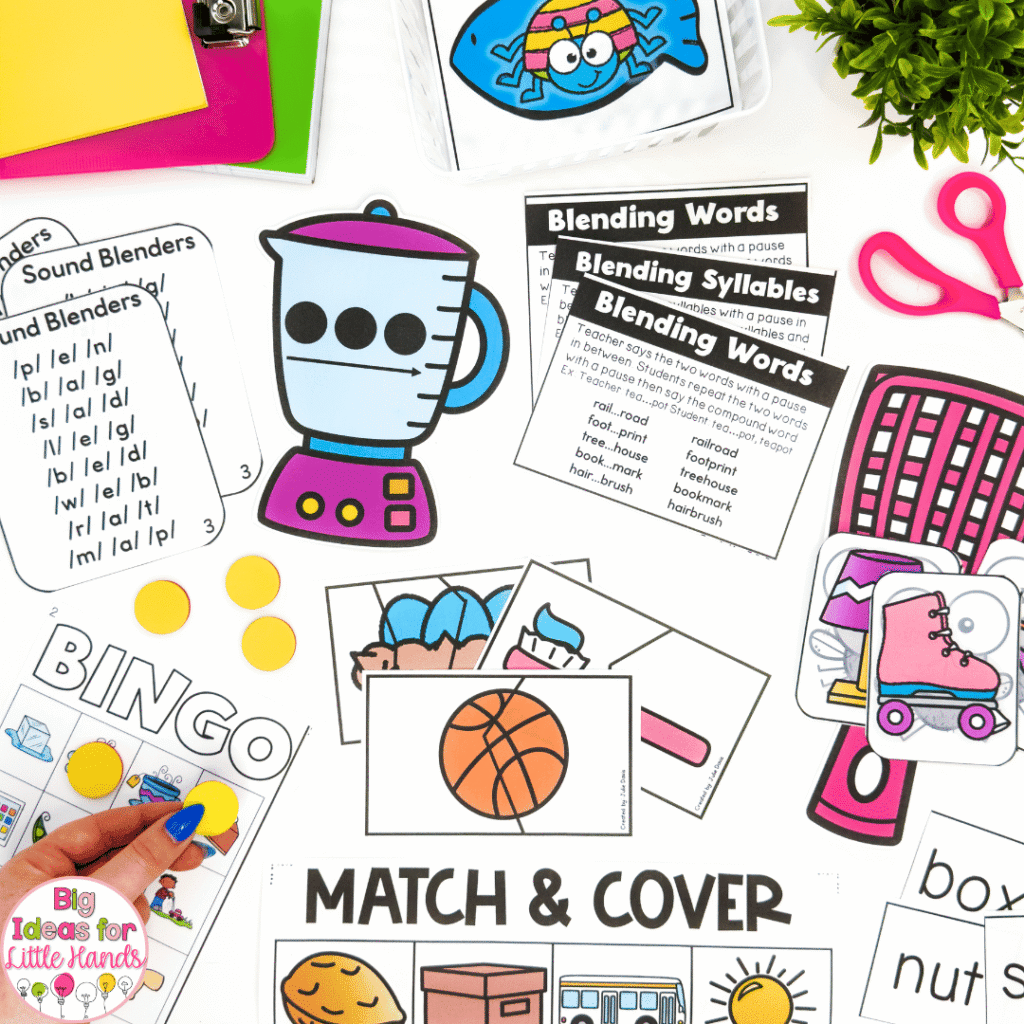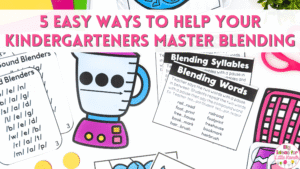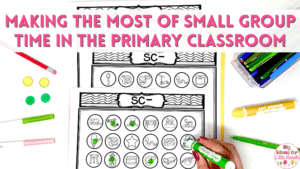Blending is one of the most important early literacy skills students learn in kindergarten. Without it, they can’t smoothly move from recognizing individual sounds to reading whole words. For some kids, blending clicks quickly, but for others, it takes repeated practice and a variety of approaches before it finally sticks. Supporting struggling students with fun, low-prep strategies can make all the difference! Here are five easy, teacher-tested ways to help your students who need extra support with blending.
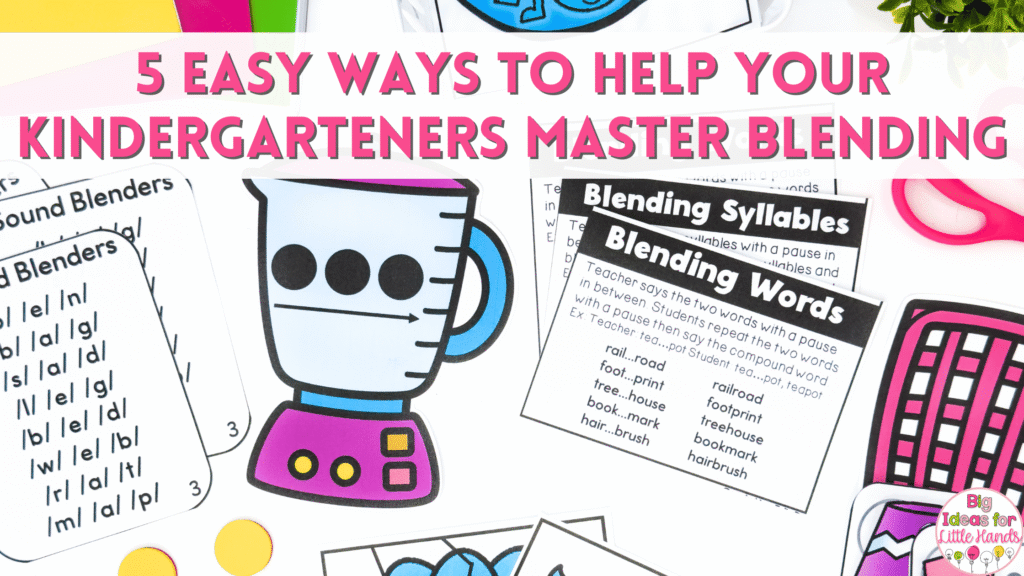
Why Blending is So Important
Blending is the bridge between knowing individual letter sounds and actually reading words. When students learn how to smoothly connect phonemes, they move from decoding “c-a-t” to confidently reading “cat“. Without this skill, reading can feel choppy and frustrating, making comprehension almost impossible. That’s why blending is such an essential step in early literacy. It builds automaticity, fluency, and confidence. Once students master blending, they unlock the ability to tackle new words independently, setting the stage for lifelong reading success! Now, let’s talk about how to get there, teacher-friend…
1. Practice Oral Blending Daily
First things first! Oral blending is where it all begins, and the best part is, it requires no materials at all. This is where you’ll want to start, and make sure you allow plenty of practice. Here are some ways to do just that:

- Model first. Say a word in segmented sounds such as /c/ /a/ /t/. Then immediately blend the sounds together to say the word “cat”.
- Have students echo. Say the segmented sounds again and let students shout out the blended word as a group.
- Use during transitions. Waiting in line? Give a segmented word and have students whisper the blended version.
- Make it playful. Turn it into a “robot talk” game for a dose of extra fun. Say the word in robot voice, and students decode it into “people talk.” This one will make your kids laugh and excited to try it for themselves.
These quick, daily repetitions build the foundation for later print-based blending. Try and sneak these oral blending opportunities into moments like your morning meeting, when you’re about to transition, and of course, during small groups.
2. Get Moving with the Blending Hop Game
Active learners benefit from pairing sounds with movement. If you’re looking for a fun activity to incorporate both, you’ll love this blending hop game! Here’s how to set it up:
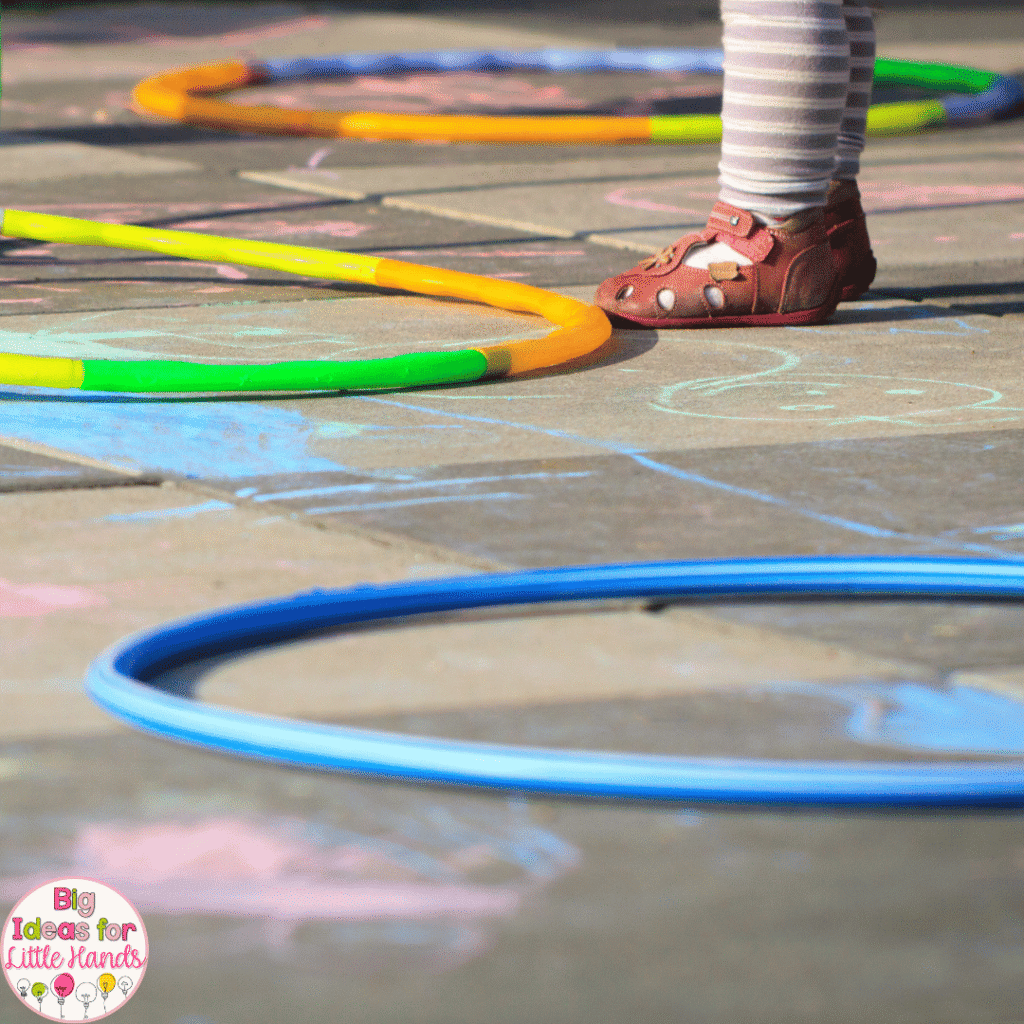
- Place 3-4 hula hoops or floor dots in a row. Each one represents a phoneme.
- Say a segmented word like /s/ /i/ /t/. Students hop into the first hoop and say /s/, then the second hoop and say /i/, then the third hoop and say /t/.
- After touching each sound, have them jump forward out of the hoops while blending: “sit!“
After you’ve done this a few times, you can vary it a bit to keep things fun. Race against a timer, work in pairs, or add silly actions (clap, stomp, spin) instead of hops. This activity combines auditory, kinesthetic, and visual learning, which is perfect for kids who need blending practice reinforced in multiple ways.
3. Use Visual Tools Like Elkonin Boxes
Elkonin boxes are one of my favorite ways to help students who are struggling with blending. The sound boxes give students a concrete way to “see” what their ears are hearing. Here’s how:
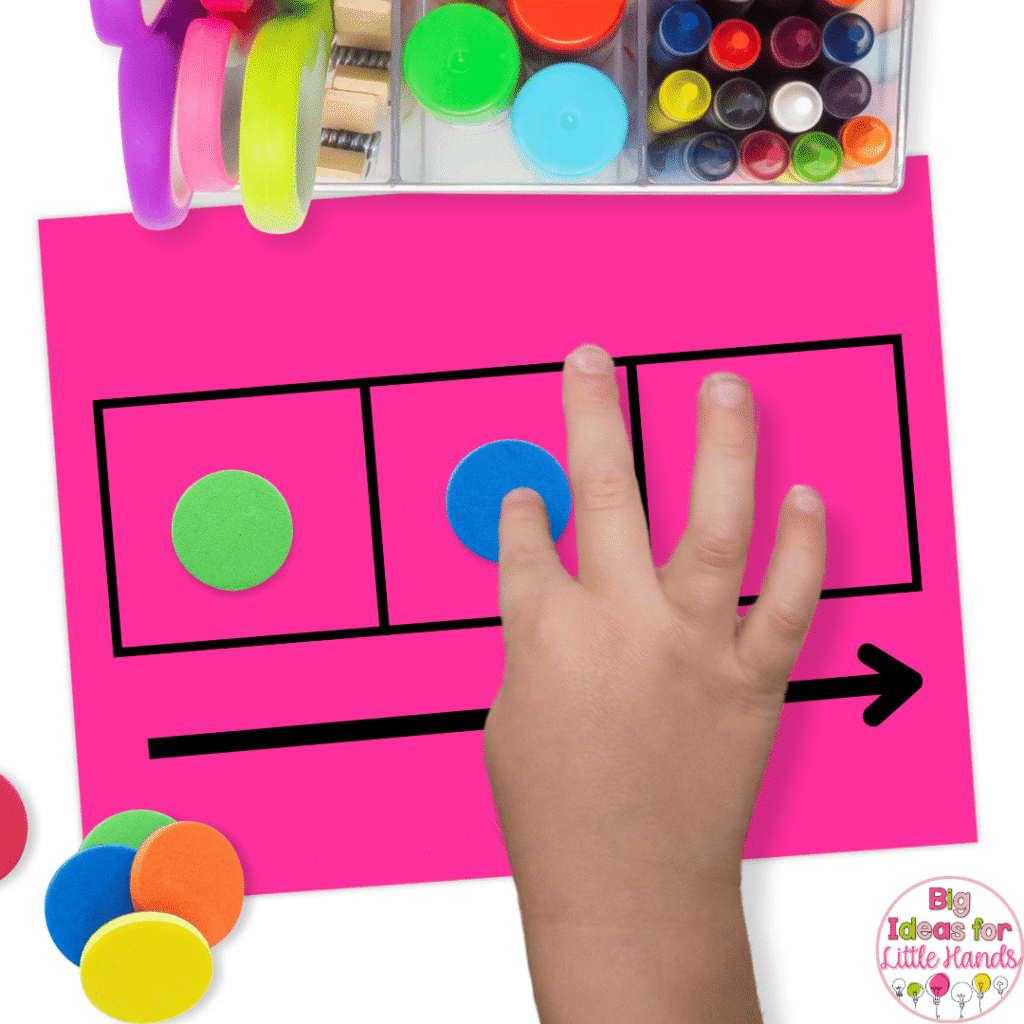
- Draw three boxes on a whiteboard or use printable mats or boards.
- Give each student small counters, cubes, or themed manipulatives. Mini erasers, buttons, or pom-poms all work well.
- Say a word slowly, stretching each sound as you go: d-o-g. Students push one object into a box for each sound.
- After placing all the sounds, students sweep a finger under the boxes while blending: dog.
- Once they’re ready, move to writing the letters instead of using manipulatives to represent them. Students can write a letter in each box as they say the sound.
Elkonin boxes help students slow down and isolate sounds before pulling them together into words. These are such a helpful tool for your students who struggle with this skill! I love using them in small groups and for whole group demonstrations. Once your kids get the hang of it, you can also place the Elkonin box mats, some CVC flashcards, and magnet letters in a center for them to practice independently.
4. Try Mystery Word Reveal Activities
This one feels like a game, but it’s secretly a powerful blending exercise. I know you and your kids will love it! Here’s how it works:
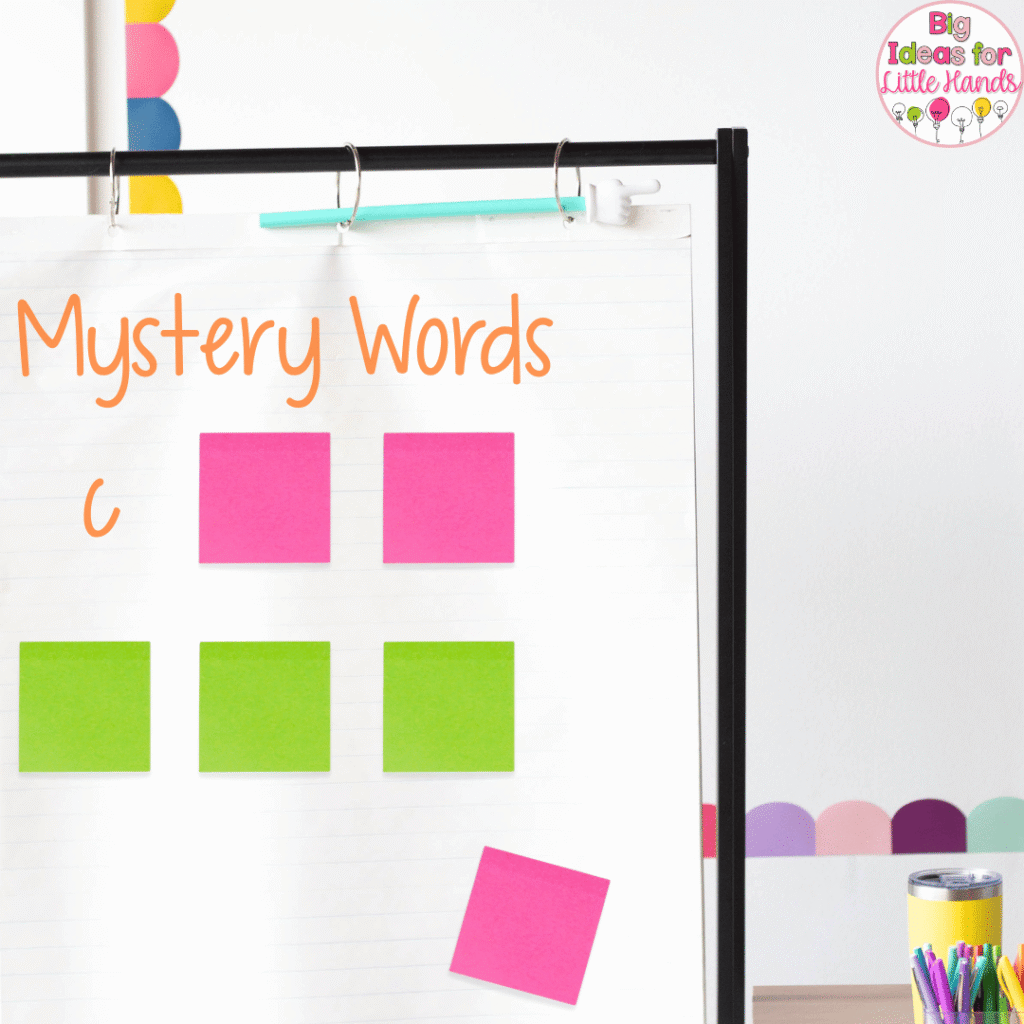
- Write a CVC word on the board and cover each letter with a sticky note.
- Pull off one sticky note at a time, saying the sound as it’s revealed. For example, uncover c and say /c/. Then uncover a and say /a/. Finally, uncover /t/.
- As students see each letter, have them repeat the sound and try to guess the blended word before the final reveal.
- For extra fun, let students take turns being the “word detective” who pulls off the sticky notes.
The gradual reveal encourages students to pay close attention to each phoneme while still experiencing the “aha!” moment of blending it into a real word. Plus, it’s just plain fun! This quick and easy activity can be used during those moments when you finish early, are about to transition, or have a few extra minutes to fill.
5. Small Group Blending Games
I’ve saved the best for last! It’s no secret that students love playing games, right?! Games keep practice engaging while still targeting essential skills. My Blending Phoneme Sounds Games are designed for just this purpose. There are 11 different games included that come in 4 versions for each one to ensure you have options for all student levels. There are game options for 2, 3, and 4 phonemes as well as compound words and syllables.
To get started, choose a game based on student needs. Start with 2 phonemes for beginners, then progress to 3-4 phonemes or even compound words. Then, in small groups, introduce the game and play a few times with your group. Since there are so many different games included, you can rotate between the different versions to ensure practice never feels repetitive. Once kids know how to use these games, they also make fantastic partner activities and centers! Here are some of the games included:
- Blending Sounds Bingo
- Blending Sounds Puzzle Cards
- Blending Sounds Sound Talks
- Blending Sounds Blender It Up
- Blending Sounds Let’s Build a Pizza
Be sure to read this post next to take a closer look at all of the fun games included! I know your kids will love them! And, since they’re aligned with Heggerty and the Science of Reading, you know they’re not just “fun”, they’re research-backed and effective, too! These games are great to use as phonics warm-ups, intervention, or lessons during your small group reading block to help your students with phonological awareness.
Grab a Free Blending Game Sample
Want to test these out in your classroom? You’re in luck! I’ve got a special freebie just for you! Enter your email below to have a free sample game sent straight to your inbox.
This is a great opportunity to see what these games are all about! Give them a try with your small groups this week to watch the fun unfold!
Mastering Blending Can Be Fun!
Blending takes time, patience, and lots of repetition. The more sensory pathways you can weave into practice, the better the results! Remember to include oral, kinesthetic, visual, and playful learning opportunities to help make this skill click. Once they’ve mastered blending, the door opens to fluent, confident reading. And with tools like daily oral practice, movement games, sound boxes, and small group games, you’ll have everything you need to get them there!
Don’t forget friends, you can find my ready-to-go Blending Small Group Games right here! The variety of games means you’ll have ready-to-go options for your whole group lessons, small group rotations, or even centers all year long. Grab them now to set yourself up for success!
Looking for More?
Be sure to check out these posts next for more fun phonics games and activities to try with primary learners.
- At Home Phonemic Awareness Games
- Engaging No-Prep Phonics Games and Activities for Kindergarten
- How to Differentiate Phonics Instruction Using Small Group Games
Pin it!
Save this post on Pinterest so that you can quickly and easily find it when you’re ready to weave more blending activities into your lesson plan!
